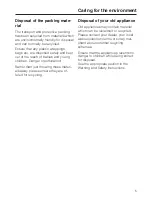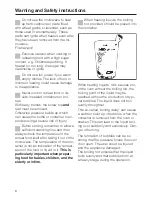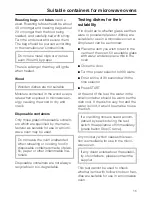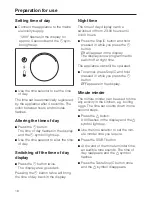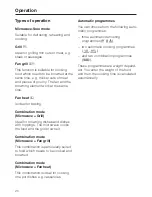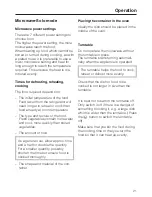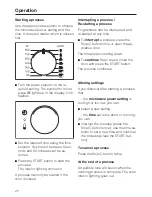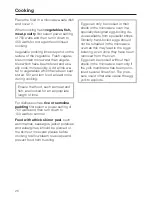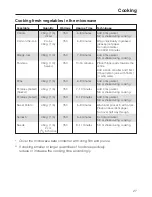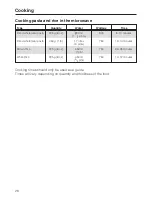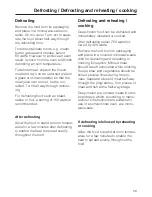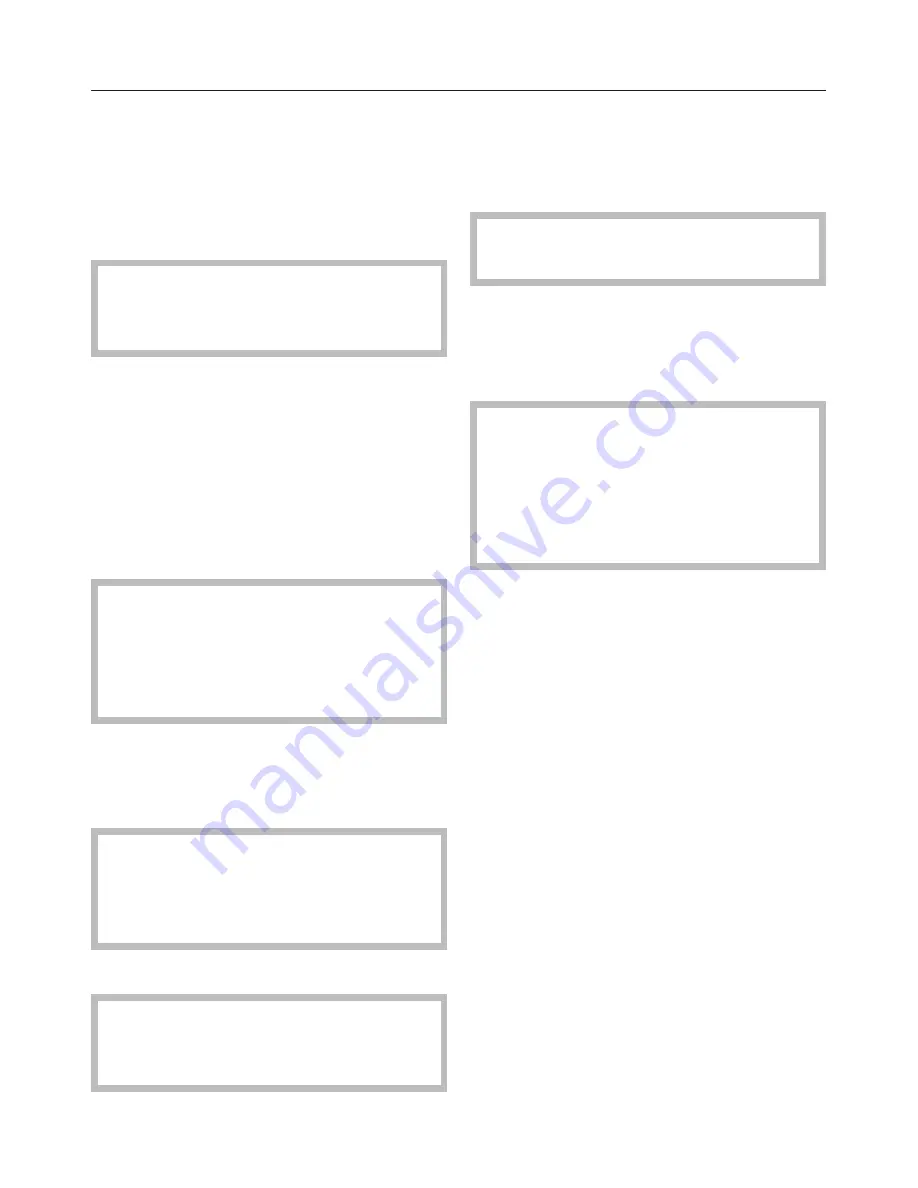
– For even defrosting and to avoid
overcooking unevenly shaped cuts of
meat, poultry or fish, small pieces of
aluminium foil may be used to mask
wingtips or other thin parts for the
last few minutes of the process.
Make sure that the aluminium foil is
at least 2 cm from the oven walls at
all times. It must not touch the walls.
– Metal meat skewers or clamps
should only be used if they are very
small in comparison to the size of the
cut of meat.
Glassware
Heat-resistant glass or ceramic glass
are ideal for use in the microwave oven.
Crystal glass contains lead which
could cause the glass to crack.
Glass dishes with a milled rim are
also subject to this risk. Both are un-
suitable.
Porcelain (chinaware)
Porcelain (chinaware) is a suitable ma-
terial.
Do not use porcelain with gold or sil-
ver edging or items with hollow
knobs or handles, as insufficient
ventilation may cause pressure.
Earthenware
Decorated earthenware is only suit-
able if the decoration is beneath an
all-over glaze.
Earthenware can get very hot, and may
crack.
Glazes and colours
Some glazes and colours contain
metal.
This makes them unsuitable for use in a
microwave oven.
Plastics
Plastic containers must only be used
for microwave mode alone.
Plastics must be heat-resistant to a
minimum of 110 °C. Otherwise the
plastic may melt and fuse with the
food.
Special plastic utensils, designed for
use in microwave ovens are available
from good retail outlets.
Melamine ware is not suitable as it ab-
sorbs energy and heats up. When pur-
chasing plasticware, make sure that it is
suitable for use in a microwave oven.
Disposable containers, such as trays
made from polystyrene, can only be
used for very short timed warming and
reheating of food.
Plastic boiling bags can be used for
cooking and re-heating. They should be
pierced beforehand so that steam can
escape. This prevents a build-up of
pressure and reduces the risk of the
bag bursting.
Suitable containers for microwave ovens
14





